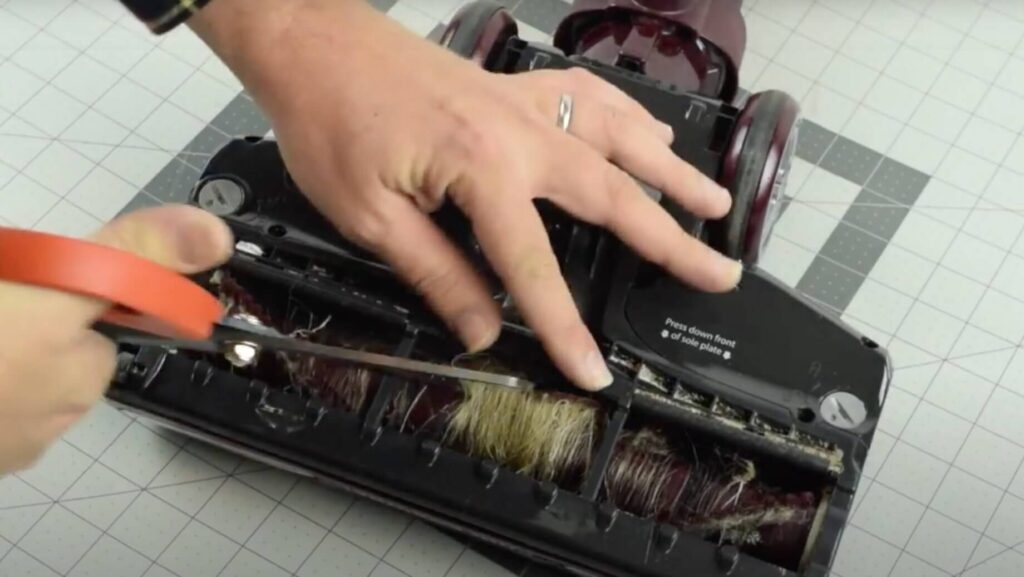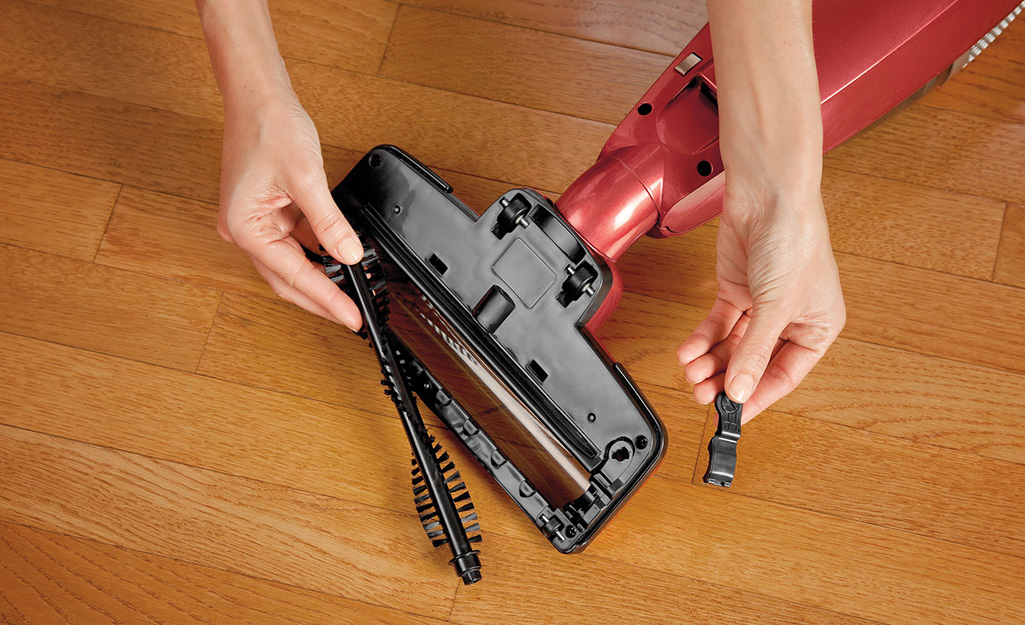Your vacuum might spit stuff back out due to various reasons. Clogged filters or hoses can disrupt suction, causing debris to escape. An overloaded or incorrectly installed dustbin may also lead to spitting issues. Worn-out brushes or rollers might fail to pick up debris effectively. Additionally, a loss of suction power or leaking seals and gaskets can contribute to the problem.
To address this, regularly clean and maintain your vacuum, checking filters, hoses, and dustbins. Properly dispose of debris and seek professional help for persistent issues. By understanding and addressing these factors, you can keep your vacuum working efficiently and prevent the frustration of spitting out debris.
What Are The Common Reasons for Vacuum Spitting?

Clogged Filters
Clogged filters in a vacuum can lead to debris expulsion in several ways. The primary function of filters is to trap dust and particles, preventing them from recirculating into the air. When filters become clogged
Reduced Airflow: As the filter becomes clogged with dirt and debris, the airflow in the vacuum is restricted. This reduction in airflow can lead to a buildup of pressure within the vacuum, causing it to expel debris forcefully.
Overheating: Restricted airflow also causes the vacuum motor to work harder, leading to overheating. The vacuum may then expel debris as a mechanism to release built-up pressure and prevent damage to the motor.
Tips on checking and cleaning filters regularly
- Frequency: Filters should be checked at least once a month, more often if you have pets or if the vacuum is used frequently.
- Cleaning Methods: Depending on the type of filter (HEPA, foam, or felt), cleaning methods may vary. HEPA filters may require replacement, while others can be cleaned with water or a vacuum cleaner attachment.
Full Dustbin or Bag
An overflowing dustbin or bag in a vacuum can significantly impact its performance and lead to spitting issues:
Reduced Suction Power: When the dustbin or bag is full, the vacuum’s suction power decreases. This can cause the vacuum to expel debris instead of effectively suctioning it into the bin or bag.
Compromised Filtration: An overfilled dustbin or bag may allow dust and debris to bypass the filters, leading to spitting. This compromises the filtration system’s efficiency.
Recommendations on maintaining an empty dustbin or replacing bags as needed
- Regular Checks: Periodically check the dustbin or bag and empty it if it’s nearing full capacity.
- Follow Manufacturer’s Guidelines: Follow the manufacturer’s recommendations regarding the replacement of bags or emptying of dustbins.
Blocked Hose or Pathways
Blockages in hoses or pathways can disrupt the vacuum’s suction and result in spitting
Interrupted Airflow: Blockages impede the smooth flow of air through the vacuum, causing pressure imbalances that lead to debris expulsion.
Strain on Motor: The vacuum motor works harder to maintain suction, potentially causing overheating and triggering spitting as a release mechanism.
Tips on inspecting and clearing blockages
- Visual Inspection: Regularly inspect hoses and pathways for visible blockages.
- Use of Tools: Utilize vacuum cleaner attachments or tools designed for clearing blockages in hoses.
Worn or Faulty Belts
Worn or faulty belts can contribute to vacuum spitting by affecting the brush roll and overall functionality
Slipping Brush Roll: A worn belt may result in the brush roll slipping, reducing its effectiveness in picking up debris. This can lead to spitting as the vacuum tries to expel inadequately picked-up debris.
Irregular Rotation: Faulty belts may cause the brush roll to rotate irregularly, disrupting the proper functioning of the vacuum and contributing to spitting.
Suggestions for checking and replacing belts
- Regular Checks: Inspect the belt for signs of wear or damage regularly.
- Follow Manufacturer’s Recommendations: Stick to the manufacturer’s guidelines on belt replacement intervals.
What are the Essential Vacuum Maintenance Tips to Extend Lifespan and Ensure Peak Performance?
Keep your vacuum running smoothly by cleaning and checking filters, hoses, and belts regularly to prevent clogs. Dispose of debris correctly, use good replacement parts, and think about getting a new vacuum if yours is struggling or outdated. Here are the extended view of these
Regular Cleaning Schedule
Comprehensive Maintenance: A routine cleaning schedule involves more than just emptying the dustbin or replacing the bag. It should encompass all components, including filters, hoses, brush rolls, and belts. Regular maintenance ensures that every part of the vacuum is functioning optimally, extending its lifespan.
Preventive Maintenance: The goal of a regular cleaning schedule is not only to address existing issues but to prevent them. By proactively cleaning and inspecting components, you can identify potential problems before they escalate, saving both time and money on repairs.
Frequency Variation: Different components may require different frequencies of cleaning. For example, filters may need attention on a monthly basis, while belts might only require inspection every three to six months.
Incorporate User Habits: Consider the habits and usage patterns of the vacuum’s primary users. If the vacuum is used frequently or in challenging environments (e.g., homes with pets), a more frequent cleaning schedule may be necessary.
Documentation: Maintain a maintenance log that records when different components were last inspected or replaced. This log can serve as a valuable reference for anticipating future maintenance needs.
Proper Disposal of Debris

Impact on Filtration: Proper disposal practices are crucial to maintaining the efficiency of the vacuum’s filtration system. Incorrect disposal of debris, especially large or non-degradable items, can lead to blockages and compromise the filtration process.
Avoiding Secondary Contamination: Disposing of debris in a responsible manner is not just about the vacuum but also about the overall cleanliness of the living space. Debris that escapes during disposal can settle back into the environment, diminishing the benefits of vacuuming.
Use Sealed Bags or Bins: Opt for vacuum models that feature sealed dustbins or disposable bags. This minimizes the chance of debris escaping during disposal, ensuring a cleaner and healthier disposal process.
Designated Disposal Area: Designate a specific area for debris disposal, preferably outdoors. This prevents debris from spreading indoors and allows for easy cleanup after disposal.
Educate Users: Ensure that all users are aware of proper disposal practices. This includes avoiding the disposal of large or sharp items that can damage internal components.
Checking and Replacing Parts
Proactive Component Monitoring: Regularly checking the condition of filters, belts, and other replaceable parts is not just about fixing what’s broken. It’s about proactively monitoring wear and tear, and preventing unexpected failures that can disrupt vacuum performance.
Dependency between Components: Components like belts, filters, and brush rolls often work in tandem. A malfunction in one can put additional strain on others. Regular inspections help identify these interdependencies, allowing for comprehensive maintenance.
Visual Inspections: Train users to conduct visual inspections of key components. Look for signs of wear, damage, or accumulation of debris that may impede functionality.
Follow Manufacturer’s Guidelines: Follow strictly to the manufacturer’s recommendations regarding replacement intervals for filters, belts, and other parts. This helps maintain warranty coverage and ensures compatibility with the vacuum model.
Consider Upgrades: If you consistently face issues with specific components, consider upgrading to higher-quality replacement parts. While this may involve a higher upfront cost, it can pay off in terms of extended lifespan and improved performance.
FAQ
Why is my vacuum clogged but the bag is not full?
Sometimes, a vacuum may be clogged even if the bag isn’t full. The blockage could be in the hose, wand, or other pathways where debris accumulates. Check these areas and remove any obstructions to restore proper suction.
How do you unblock a vacuum tube?
To unblock a vacuum tube, start by disconnecting it. Use a straightened coat hanger or a specialized vacuum tube unblocking tool to gently dislodge and remove any debris. Ensure the tube is clear before reattaching.
What happens when a vacuum filter is clogged?
When a vacuum filter is clogged, it restricts airflow, reducing suction power. This can lead to debris being expelled rather than collected. Regularly clean or replace filters to maintain optimal vacuum performance.
How do you unclog a vacuum roller?
To unclog a vacuum roller, turn off the vacuum and flip it over. Use scissors, a knife, or your hands to carefully remove any tangled hair, strings, or debris from the roller. Ensure the roller spins freely before using the vacuum again.
How to clean a vacuum?
Cleaning a vacuum involves emptying the dustbin or changing the bag, cleaning filters, unclogging tubes, and removing debris from the roller. Regular maintenance ensures your vacuum works efficiently and prolongs its lifespan.
Is there a tool for unclogging a vacuum?
Yes, there are specialized tools for unclogging vacuums. A vacuum tube unblocking tool, typically available at hardware stores, is designed to reach and remove debris from hoses and tubes without causing damage.
How do you clean the bottom of a vacuum?
To clean the bottom of a vacuum, turn it off and unplug it. Use a screwdriver to remove the roller brush, then clean it and the surrounding area. Check for any blockages in the vacuum’s base, and wipe it down with a damp cloth. Regular bottom cleaning maintains efficient vacuum operation.
Final words
If your vacuum is spitting debris, it’s likely due to common issues like clogged filters, full dustbins, blocked pathways, or worn belts. Regular maintenance is the key to a well-functioning vacuum. Keep filters clean, empty dustbins timely, check for blockages, and replace worn parts.
By following these simple steps, you ensure your vacuum performs at its best, providing a cleaner and healthier living space. Don’t overlook the power of routine care for a more effective and trouble-free vacuuming experience.

